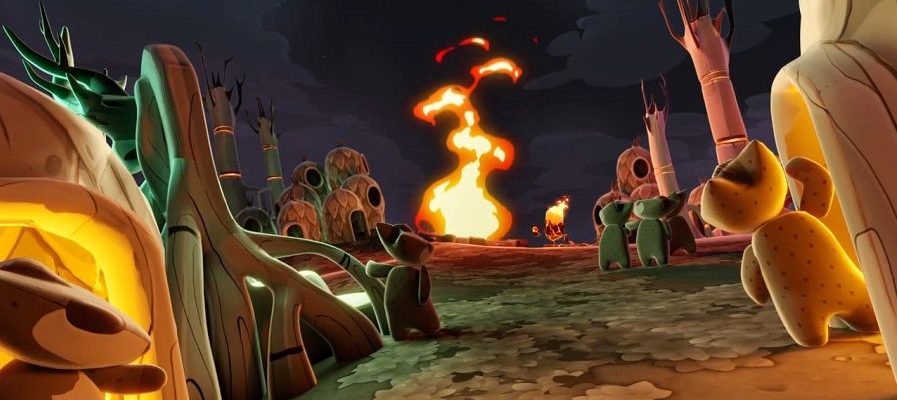In the Flame Keeper early access version, we take a closer look at the game that may be of interest to those who love the rogue-lite genre.
Flame Keeper, produced by Kautki Cave and distributed by Untold Tales, was released on March 17, 2023 as early access. By the way, let’s say that they aim to keep this rogue-lite game in early access for about a year. Also, if you’re new to the rogue-lite genre, you can also check out our Hades review content, which is one of the recent successful examples.
Flame Keeper early access review
Coal will be the main character?
The story takes place in a world of galaxies called Orbis. From the very beginning, we witness a dark army attacking this world and stealing the eternal fire that is precious to the foxes. Just then, a piece of coal that knows how to fight comes from the sky and manages to send this army with its fighting skills. Coal burns the extinguished fire with flame energy resembling a grove, but of course this is not enough. He needs to travel through the biomes and bring back the eternal fire. From now on, the fate of the Orbis world is now in the hands of coal, Igbis.
It has an average story for an independent game with flashy and cute visuals. I can’t say that his narrative aroused much interest. I can say that I see the main reason for this as the scarcity of inter-departmental cinematics.
How is it played?
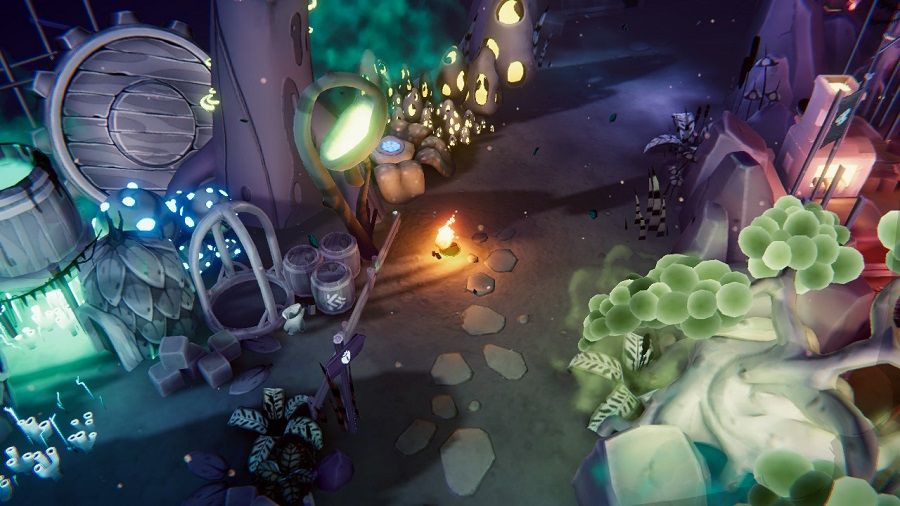
We need to find lamps from the environment for the campfire located on a galaxy surrounded by enemies. In this way, we can complete the chapter by going to the next level. Returning to finding lamps, just finding them is not enough. It also has a charger. We can do the charging by sacrificing a part of our own life bar. When this is the case, it is necessary to increase health in various ways, try not to take damage and establish a balance at a level that can sacrifice health. Considering that we spend a part of our health even to remove the lamps, we are faced with a game with a high level of challenge.
I mentioned that we can increase our health by collecting flame energy in various ways. Sometimes we can do this by cutting enemies, sometimes by taking a temporary effect from mushrooms, sometimes by dashing trees and lowering the energies in the branches. Upgrading health is not as easy as it seems. Foxes are trying to grab the flame energy right before you and take it to their nests. In other words, we also struggle with them, but fortunately, they are harmless creatures. We can slap them on the back of the neck and get them back. For this, we need to be quite agile.
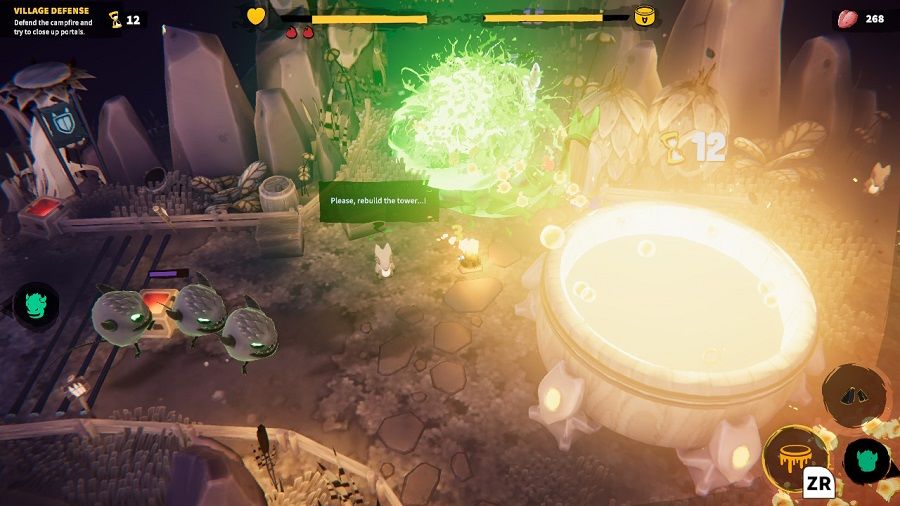
The thing that drove me crazy while playing was the energies falling from the trees. They either fall off the cliff or they go too far into the corner. There seems to be an unnecessary difficulty here. When you dash into trees, you can sometimes cause a spider to spawn there. It’s a risk factor that I like, that’s the genre itself. The game actually says that if you want health, you will take risks, but again, I must say that the energies falling out of reach is more than a risk or a challenge.
Soil and Desert
There are three chapters in each biome in the game. We see that each section is level-based in itself. Just as you can’t move on from one level to the next, due to the nature of its type, if you fail the last level, you have to continue from the first level. But not all your progress is lost.

The resources you have gained in the level remain in your pocket even if you fail, so you can improve yourself with the resources and try your luck in the same section again. Since the game is in early access, there are two biomes: land and desert. The other two biomes are closed in early access. This means that six chapters are missing. The color palettes of the two currently open biomes are very close to each other. I’d really like to see relatively different colors preferred in the other two non-open biomes after early access.
Tower Defense
There are three or four levels depending on whether there is a boss or not in the section we choose. The first two levels are based on finding the lamps I just described and placing them on the campfire. The third level is the tower defense as we know it. There is a cauldron in the middle and we need to protect the cauldron against enemy damage from the corridors for five minutes.
We can place traps in the corridor to slow down the enemies, but again in exchange for a portion of our health, just like at the level where we place the lamps! I must also say that as time gets shorter, the enemies start to inflict high damage in direct proportion to their size.
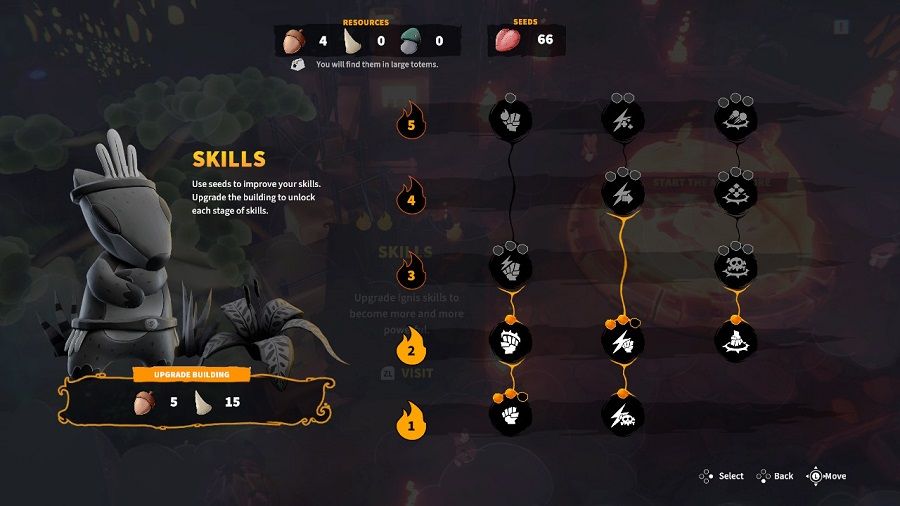
Tower defenses were the levels I enjoyed the most in the game. Being against time and gaining an advantage by sacrificing a certain health, which is also the basic dynamic of the game, gave a different pleasure. In fact, it wouldn’t be bad if a “training” section, which consists of only tower defenses independent from the main scenario, is added in the full version. Otherwise, we need to collect lamps two levels in a row in order to come to the tower defense.
Runes and Abilities
I also said that even if we fail the levels and our progress is back to the top, our resources are not gone. We can use these resources in the buildings in the fox village, which is our main center. The fox village is not only for our development, there are also tiny in-game guides. For example, we can see what short-term effects we can reduce from mushrooms, what obstacles are in tower defense.
We can upgrade rune and skill buildings with the various resources we collect, and we can unlock runes and abilities at the level corresponding to that upgrade. However, there is a difference between them. While we can drop the runes ourselves as we progress through the game, we can also obtain abilities by paying for a certain resource. In addition, to obtain resources, we can open totems by using our health in the game or we can find resources by placing the red diamond in its slot.
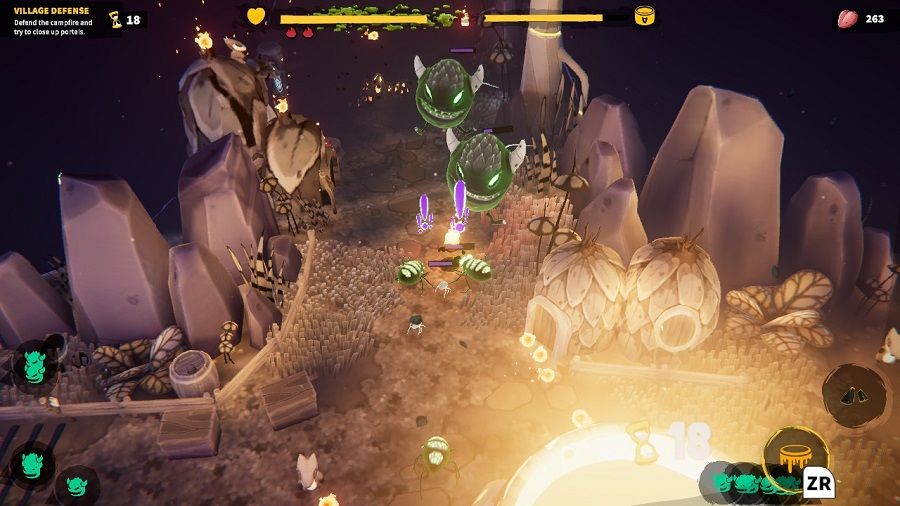
My only complaint about runes and abilities is that the required resources are too much to upgrade. Yes, at some point they wanted to complicate the game and make it play over and over again, but I think this might bore the player equally. We can also develop towers in the fox village, which are a kind of obstacle for the level where we protect the cauldron. I upgraded this building one level and left it for spending resources on runes and abilities.
Controls and Mechanics
We manage our character Ignis in isometric perspective with the arrow keys. Since the game includes hack n’ slash elements, it also carries dash mechanics, so we can avoid enemies. However, we can’t constantly dash and jump from side to side because we have a stamina. Again, this requires us to be moderate. I told you, this game requires balance and patience from the player.
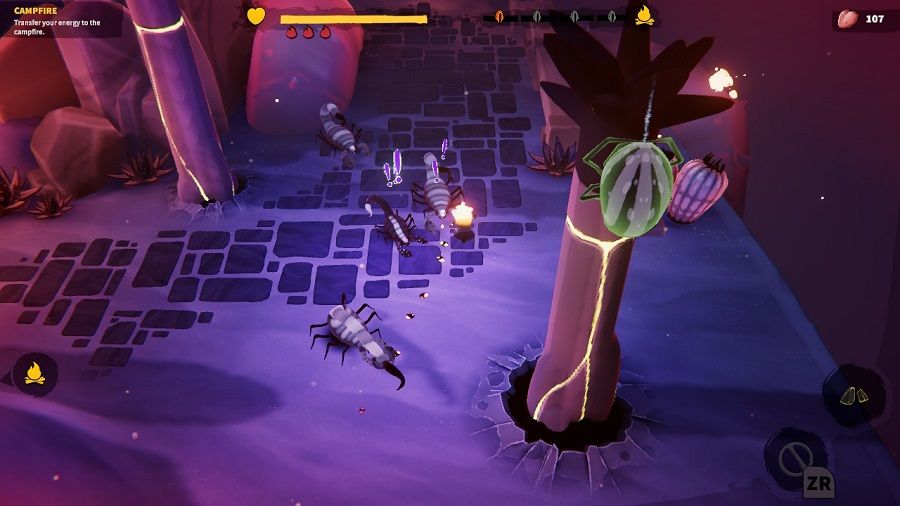
There are also active abilities with cooldowns in the game. We can randomly drop these abilities from enemies. In general, I can say that they are space-effective abilities. The good thing is that we can take the talent we have acquired to the next level. While I was experiencing the game, I did not prefer to dash because it takes one unit of endurance. Jumping consumes less stamina. So it was easier for me to avoid jumping.
Random must-have
Maps in levels, active abilities and effects obtained from mushrooms also appear randomly. Mushrooms usually have positive effects such as attack speed and health, but sometimes they can be risky. If the “Invert” effect coincides, you may have to play the game with the opposite arrow keys for a while. That’s nice because it’s not directly punitive. If you determine your direction skillfully for a certain period of time, you can get rid of this effect without any problems.
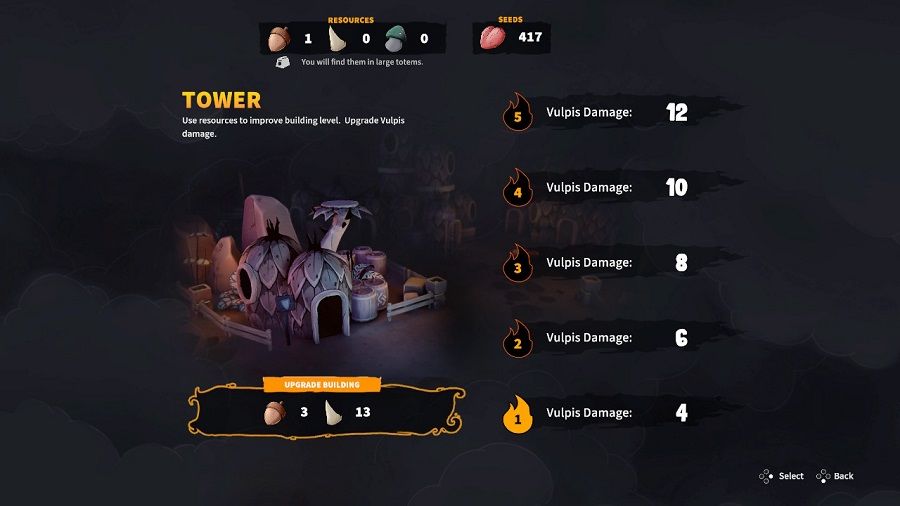
There are different types of enemies according to each biome. While we encounter spiders in the soil biome, we see scorpions in the desert. The problem I had while chopping down enemies was that I couldn’t calculate that they would do AoE damage when they died. That’s why you have to avoid after making the last hit, otherwise I can say that they are shooting revenge. As you progress, you encounter more difficult enemies, but they also have some effects such as slowing or poisoning. In summary, it is necessary to develop a tactic against every enemy.
How long does it take?
Each level takes about five to ten minutes. Naturally, a three-level episode can exceed twenty minutes. If there is a boss level, which is the fourth level, this time is even longer.
Again, one of my criticisms is that I think the level times are a bit long. Okay, you’re rogue-lite, you’re ruthless, but I’ve been playing for about half an hour and you’re facing a boss whose strategy and range of motion I’m trying to figure out. It takes half an hour to fail. At least the boss’s chapters could have been reduced to three levels. Also speaking of duration, I should also mention that there is a portal pass in the second biome. In these crossings, it can be boring to make the tide on the same road while bringing and taking the lamp. This is an element that increases the time.

Even though I had tumbled off the cliffs while trying to escape from the enemy at the beginning, I realized later that we can move forward by jumping over the rocks in between. In this way, I was able to take down some difficult enemies easily by hitting them from the top of the stone. This is very convenient for a game that is challenging in many ways. In the full version, they can add difficulties for this, such as maybe our health decreases as we stand on the rock.
Switch and PC
The game is currently available on two platforms: Nintendo Switch and PC. In this article, we experienced it on the Nintendo Switch side. We can share with you that it is a very fluent production, both as a handheld console and with a dock. Playing on the handheld console was more enjoyable for me. If you’re looking for another game suitable for a handheld console, Bayonetta Origins: Cereza and the Lost Demon, recently released exclusively for Nintendo Switch, is one of our recommendations.
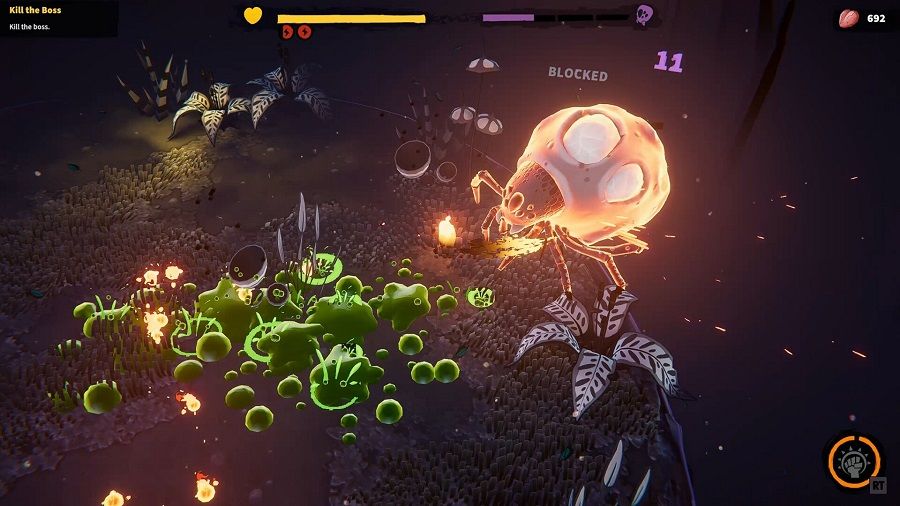
Conclusion
With its neon visual feast and great music, it managed to attract me because I’m not far from the genre, but I must say again that I hoped for more attractive arrangements in the full version.
If you like the rogue-lite genre, if you are a patience and balance person, you can check out the early access version. via My Nintendo Store On sale with $8 tag. Do you think it’s worth the price? It offers early access worth a try. However, considering that it corresponds to the 100-150 Turkish lira band in our country’s pricing, I may not recommend it if you are not interested in this genre. Let’s announce here that it has been announced that the price will be updated after early access.
